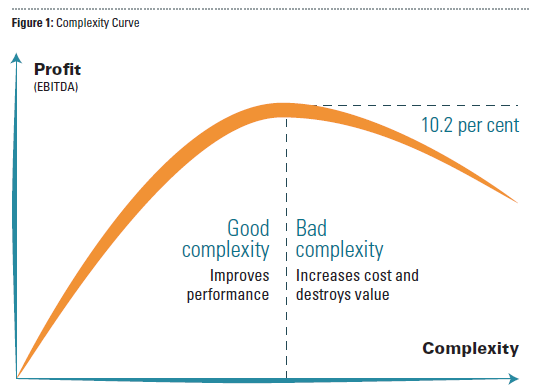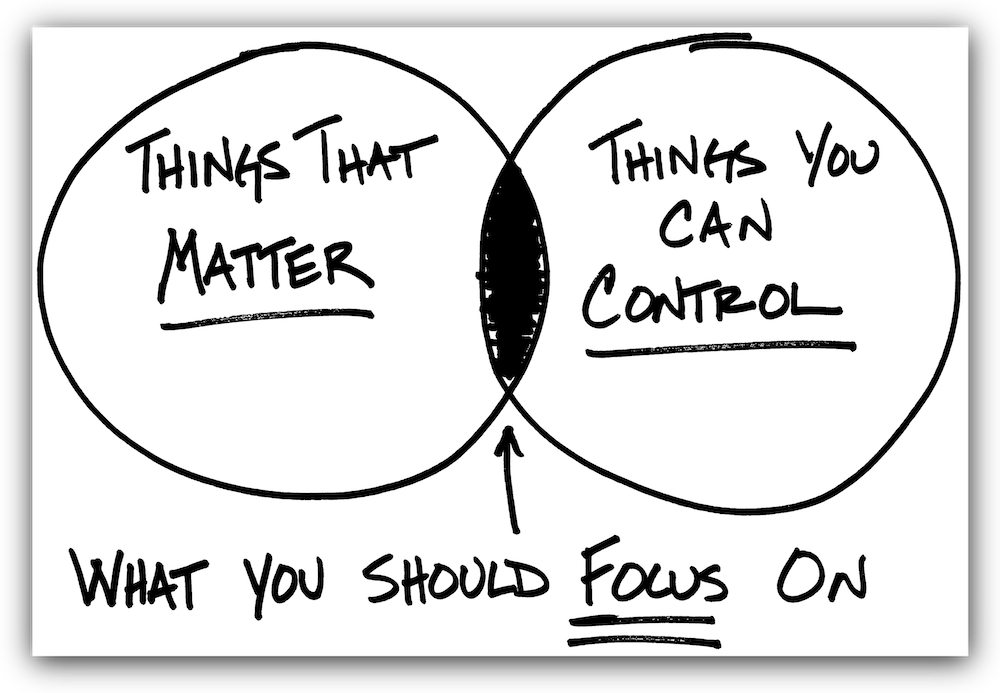In order to simplify a process or system is therefore necessary to embrace its complexity and try to eliminate the noise, wo only the necessary level is kept. It is at that point, that efforts should be kept to continuously learn, improve and communicate the processes of the system. Mastering this understanding should enable the process owners to create value by differentiation and build barrier to competitive entities. Once again, if the process is too simple, it will likely take a short time before it is duplicated and competition erode any unique value in the market place.
I n some senses complexity is inevitable. As a business grows, it needs to develop more formal methods for managing people, or to add divisions, new processes and strategic initiatives in order to grow. However, there is no control mechanism within business to prevent processes, organizations, initiatives or product portfolios from becoming too big and over-engineered. So managers continually ‘improve’ and add to what’s already in place, even though the marginal impact on the company’s performance is no longer positive. This is what we call the ‘complexity curve’ – an inverted U-shape graph that shows how complexity naturally reaches a tipping point, after which any benefits are outweighed by costs.
n some senses complexity is inevitable. As a business grows, it needs to develop more formal methods for managing people, or to add divisions, new processes and strategic initiatives in order to grow. However, there is no control mechanism within business to prevent processes, organizations, initiatives or product portfolios from becoming too big and over-engineered. So managers continually ‘improve’ and add to what’s already in place, even though the marginal impact on the company’s performance is no longer positive. This is what we call the ‘complexity curve’ – an inverted U-shape graph that shows how complexity naturally reaches a tipping point, after which any benefits are outweighed by costs.
The chart above describes the results of the Global Simplicity Index (GSI). The GSI is a study of the 200 largest companies in the world, which found that, on average, optimal complexity leads to a 10.2 per cent increase of their annual profits – amounting to $1.2billion – each year due to complexity. The study also found that companies that try to do too much, or spread themselves too thinly across businesses, geographic regions and/or markets, risk creating unnecessary complexity and alienating both customers and employees. In addition, they are less able to deal with the increasing turbulence of their environments and so when faced with major economic or market problems, they respond more slowly and less effectively than their competitors.
 You most likely have seen a diagram like this. It makes its appearance quite often in LinkedIn and other blogs focused on sharing the "5 secrets of entrepreneurial success", or "8 steps to world dominance". The point here is that the diagram is very simple, if you know basic logic and the concept of intersection, but in reality, trying to reduce success to just a few steps is rather simplistic. No matter how carefully you try to abide by a limited set of rules, guidelines or principles, decision making is at its best an intellectual and emotional process that relies in current circumstances and a lifetime set of experiences.
You most likely have seen a diagram like this. It makes its appearance quite often in LinkedIn and other blogs focused on sharing the "5 secrets of entrepreneurial success", or "8 steps to world dominance". The point here is that the diagram is very simple, if you know basic logic and the concept of intersection, but in reality, trying to reduce success to just a few steps is rather simplistic. No matter how carefully you try to abide by a limited set of rules, guidelines or principles, decision making is at its best an intellectual and emotional process that relies in current circumstances and a lifetime set of experiences.